Elevate the System's Constraint
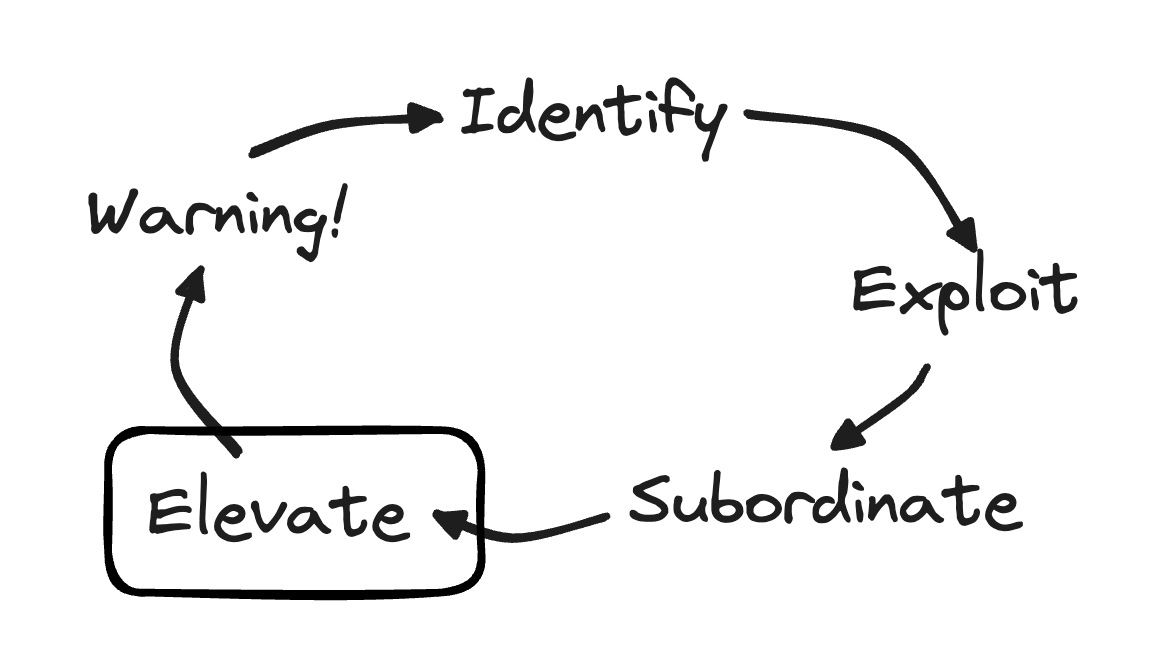
Escaping process flow
Up to now, the steps you took were focused on working within an existing process flow. The Constraint you identified and the Value Chain that you created highlighted the existing process flow of your system. Deciding how to Exploit the Constraint and having now Subordinated all the non-Constraints to that decision, you improved the system without a significant change to your Value Chain. Next, we will consider Elevating the System's Constraint.
Need help? Schedule a free 30min session
If at any point you feel like the guide is unclear or otherwise unable to help you, schedule a 30 minute session to get help. Your experience and feedback will help improve this guide for you and others.
Process flow
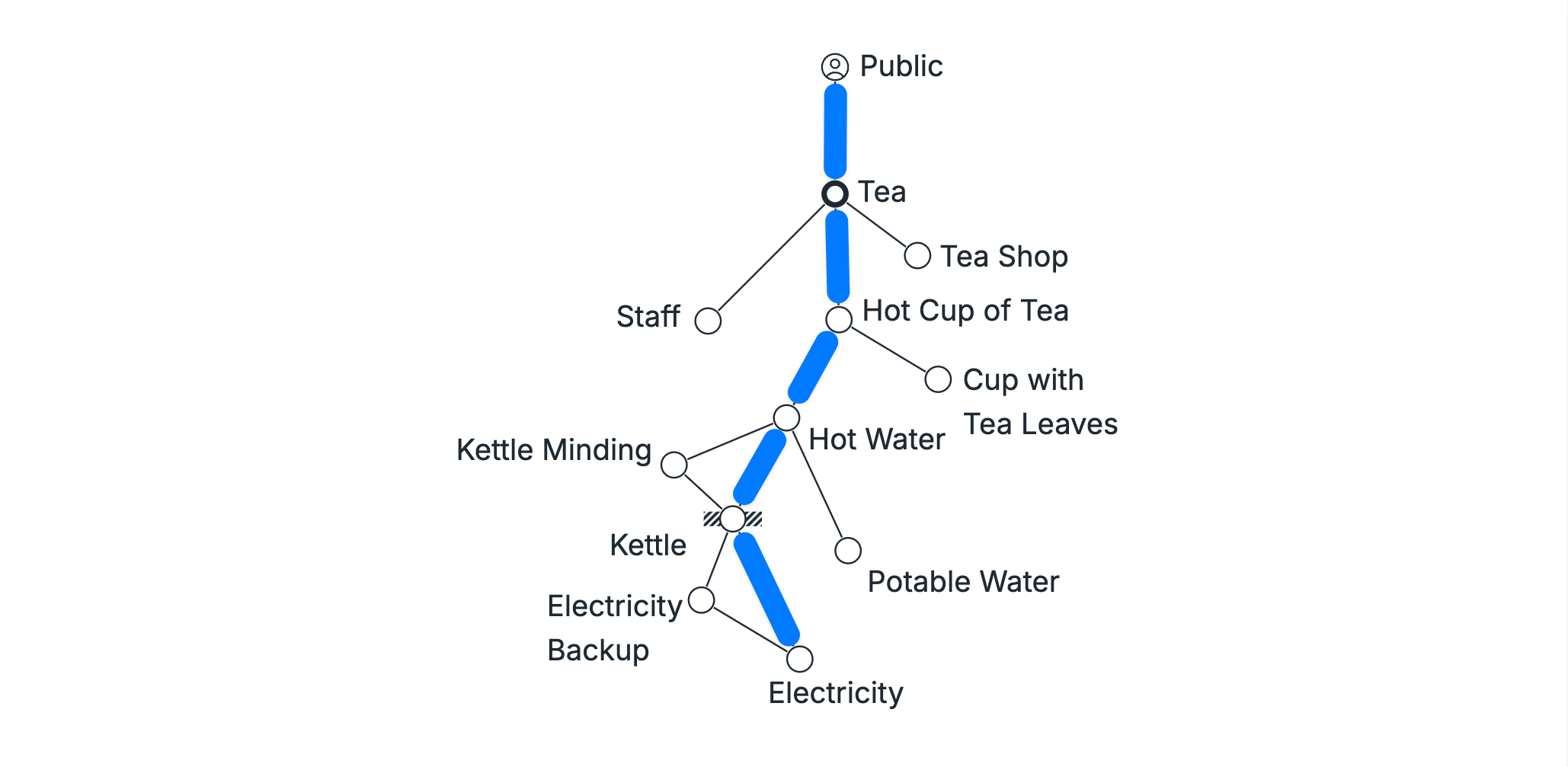
The process flow is the flow of value through the current process within the Value Chain (highlighted in the figure above). Due to how we built our Value Chain, the Constraint resides somewhere in our existing process flow. However, in order to Elevate the System's Constraint, it helps to step out of the process flow and consider the evolutionary flow.
To do that, we will consider the Component Constraint and identify its stage of evolution.
Evolution
Evolution is what happens to a component in the Value Chain when it is exposed to market and competitive pressures. The component goes through stages of evolution driven by supply and demand competition. The four stages of this evolution are as follows:
Genesis
A component in the Genesis stage is typically unique, rare, uncertain, ever-changing, and newly discovered. The focus is on exploration.
Custom
When in the Custom stage, the component is very uncommon and still being learned about. It is individually crafted and tailored for a specific environment. It is bespoke, frequently changing, and usually requires an artisan skill. No two are alike. The focus is on learning and honing our craft.
Product (+rental)
A Product is increasingly common, produced through a repeatable process, more defined and better understood. Change here is slower. While differentiation exists, particularly in the early stages, there is increasing stability and uniformity. Many of the same product will often be seen. The focus is on refining and improving.
Commodity (+utility)
A Commodity stage represents a large-scale, high-volume production, characterized by high standardization, definition, and uniformity. A commodity is designed for a specific known purpose and involves extensive repetition. The focus is on the ruthless elimination of deviations, industrialization, and operational efficiency. Over time, the process becomes habitual, less noticeable, and often forgotten.
Evolution axis
As the first step of Elevating the System's Constraint, you will identify the Component Constraint stage of evolution in your system and introduce an evolution axis to show what stage of evolution the Component Constraint is in.
In our Component Constraint scenario, we identify the Kettle as belonging in the Custom stage of evolution. It turns out that our tea shop cofounder is a brewer and enjoys building custom kettles, which is what we are using in our operations.
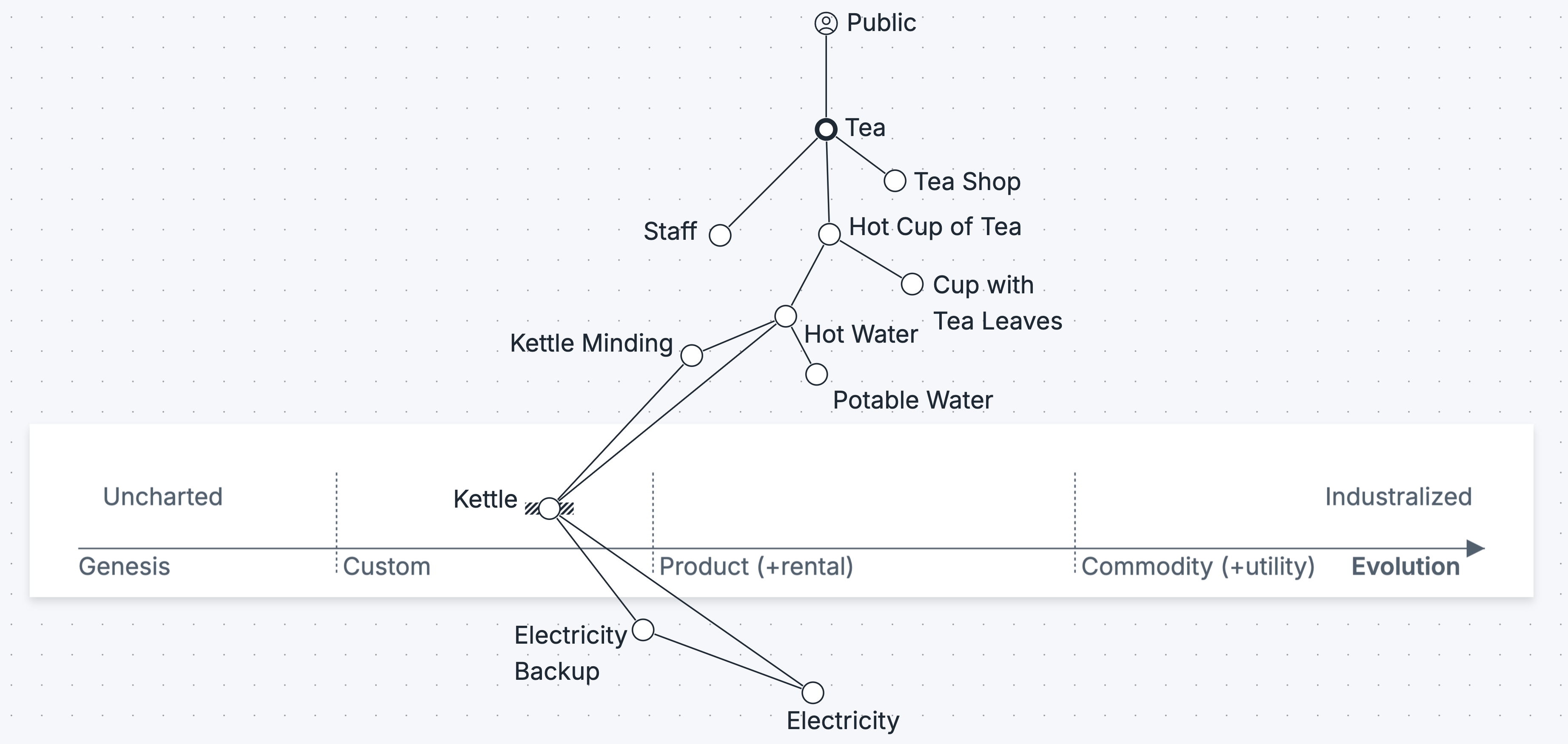
Everything evolves
With the Component Constraint now plotted on the evolution axis, we can highlight the first pattern for Components we already metioned above: Everything evolves through supply and demand competition.
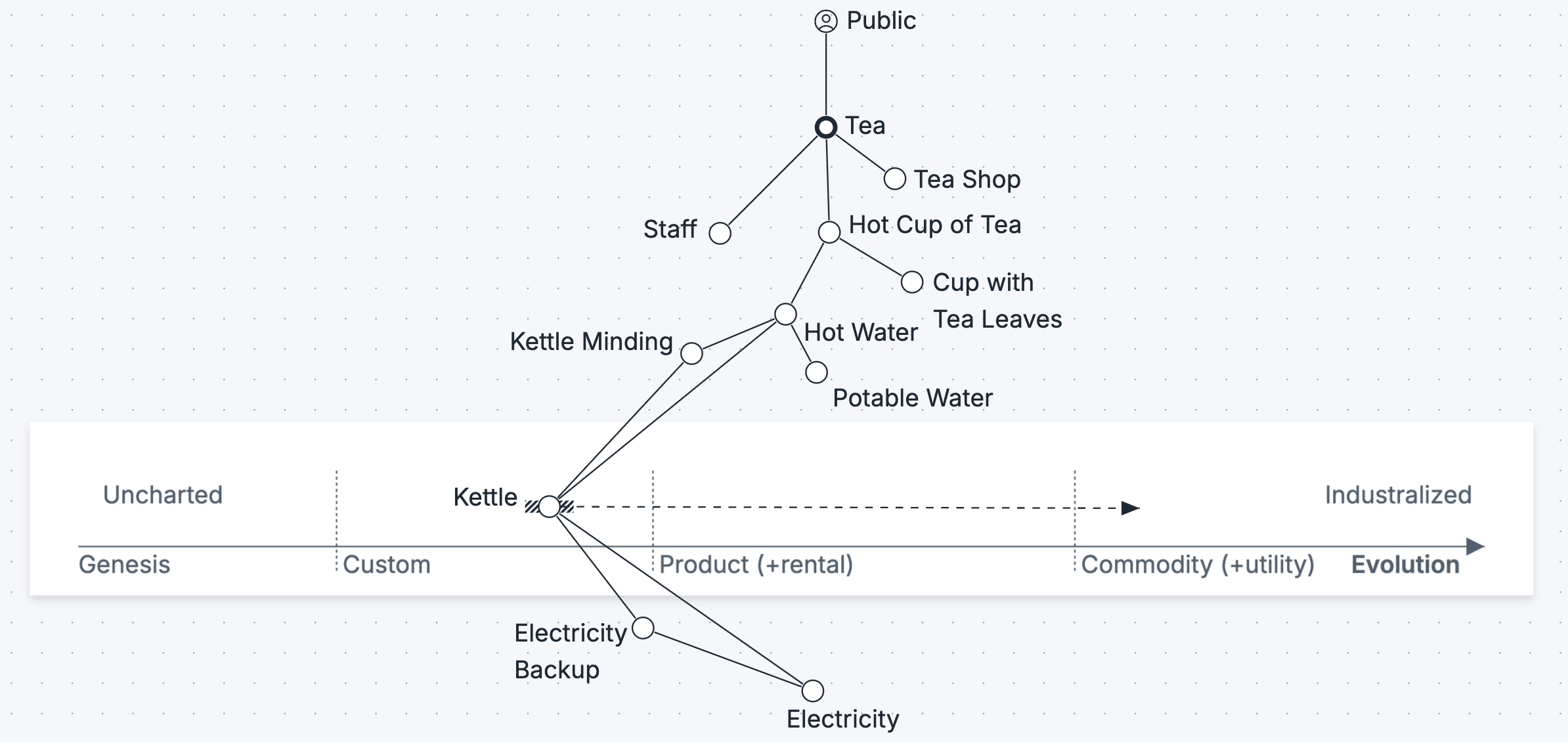
Next, consider this pattern and apply it to your system's Component Constraint by identifying what your Component Constraint would be like if it were in a different stage of evolution. Remember that the goal at this step is to Elevate the System's Constraint.
In the example Component Constraint scenario, the Kettle is in the Custom stage, and knowing that everything evolves, we are now free to think outside the process flow. With this context, we consider what a Kettle component would look like as a Product or as a Commodity.
It turns out that there are multiple products that fall into commerical hot water dispenser category. Furthermore, there are hot water dispensers that can be installed inline with the plumbing that dispense brewing-ready hot water "on demand" whenever the faucet is turned on.
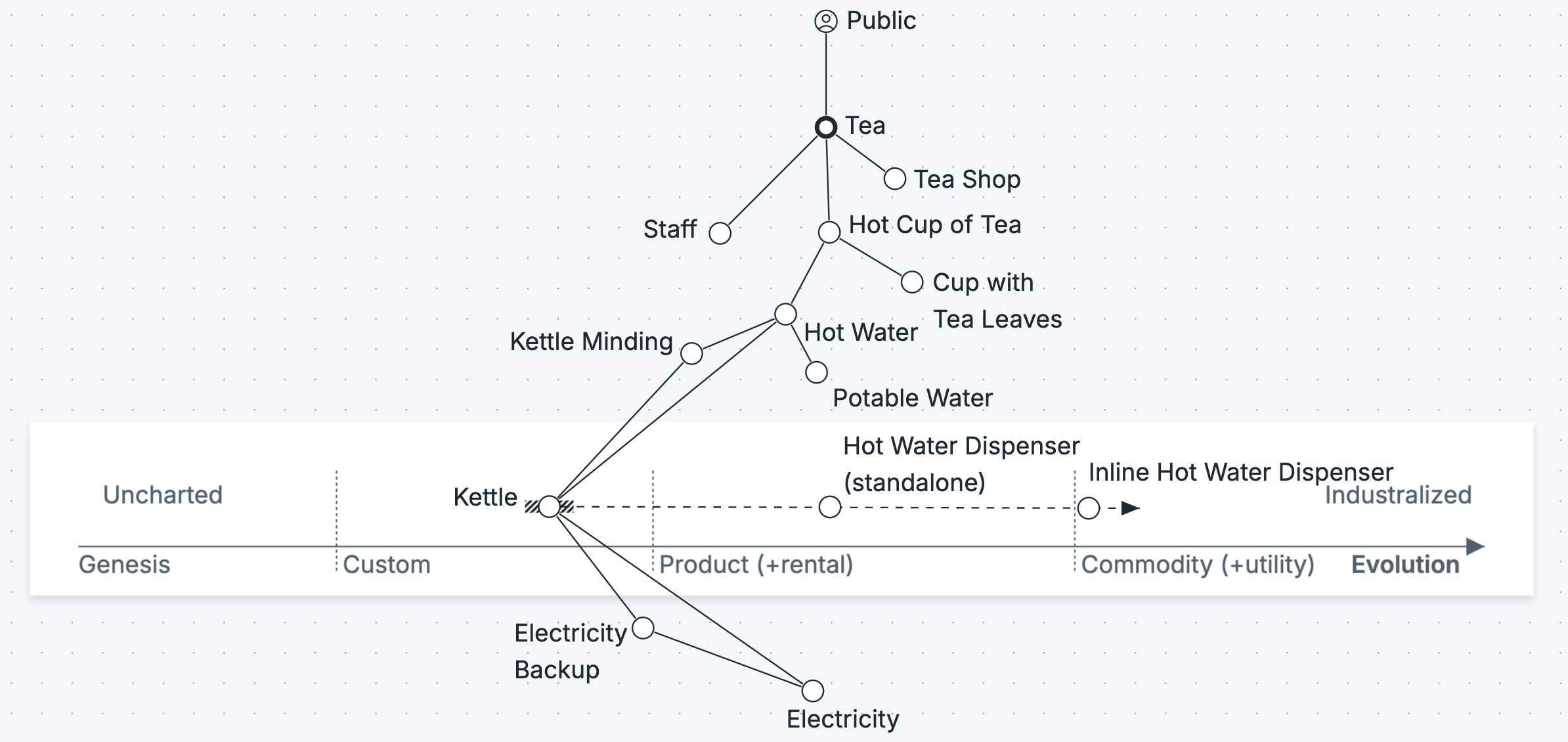
Thus, by introducing the evolution axis and considering one common pattern, we have two scenarios for Elevating the System's Constraint. In one scenario we can trade our Custom Kettle for a Hot Water Dispenser Product.
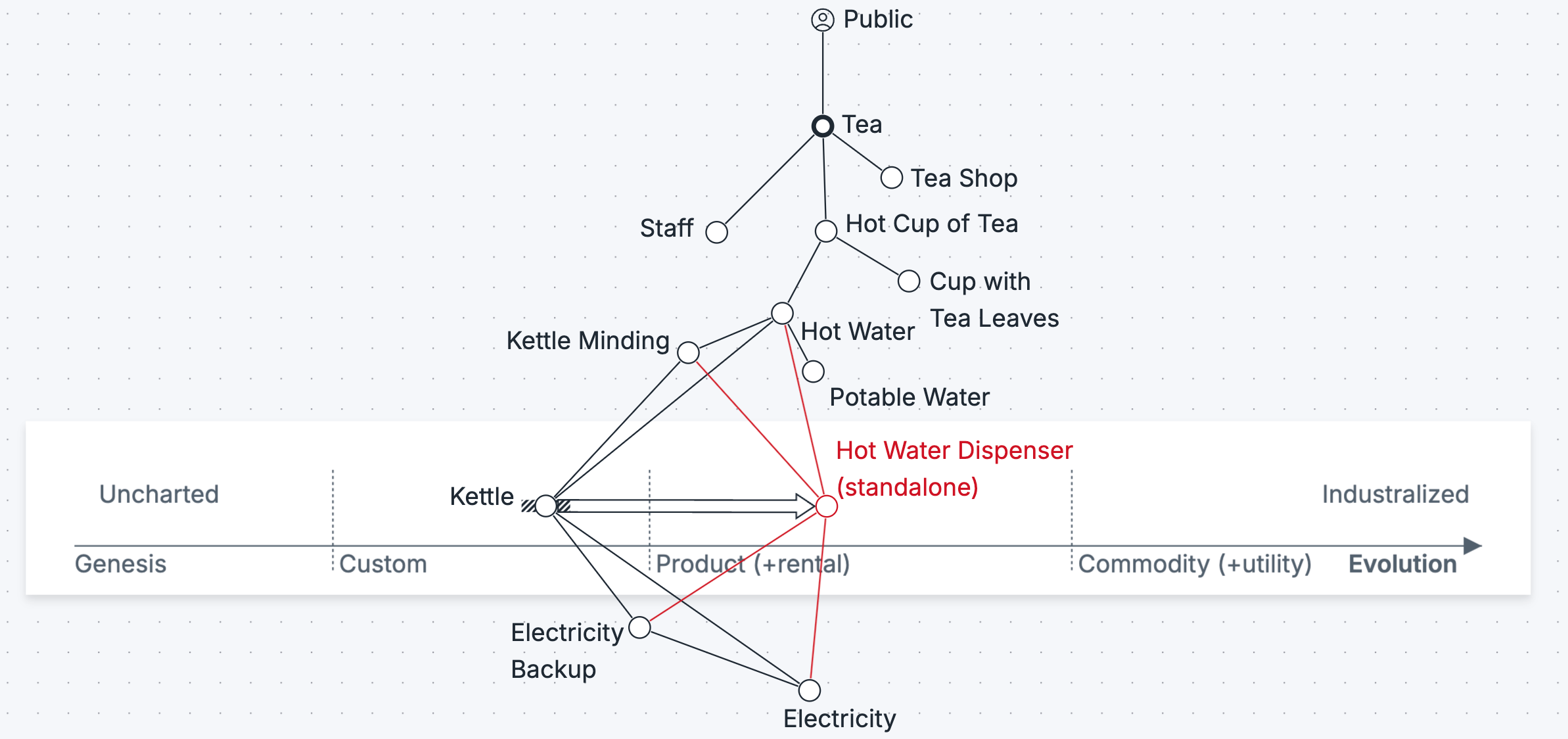
In the other scenario, we can trade in our Custom Kettle for an Inline Hot Water Dispenser that functions more like a Commodity (utility).
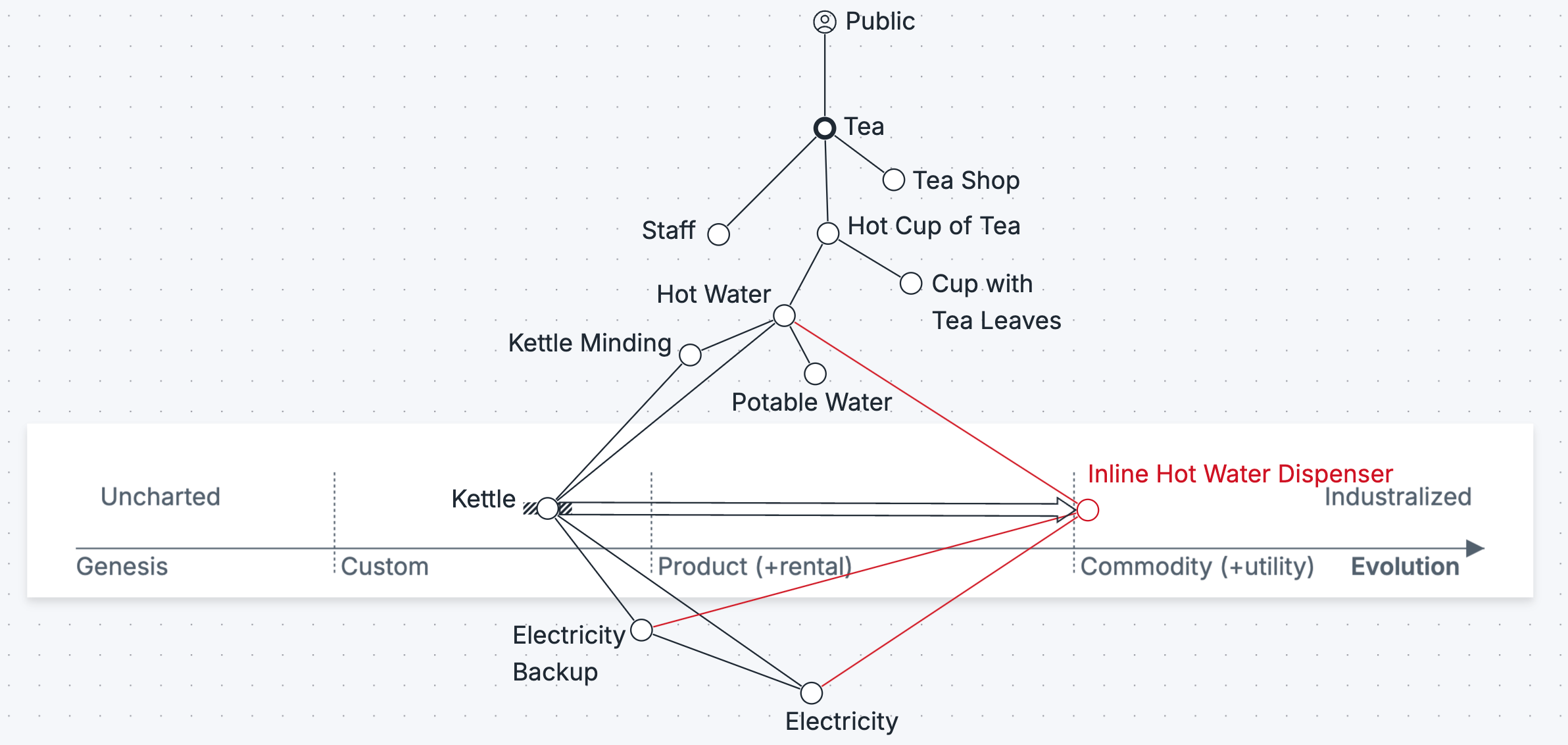
After some consideration, we decide to install an Inline Hot Water Dispenser.
Elevate
With the new Inline Hot Water Dispenser installed, our Value Chain now looks as follows.
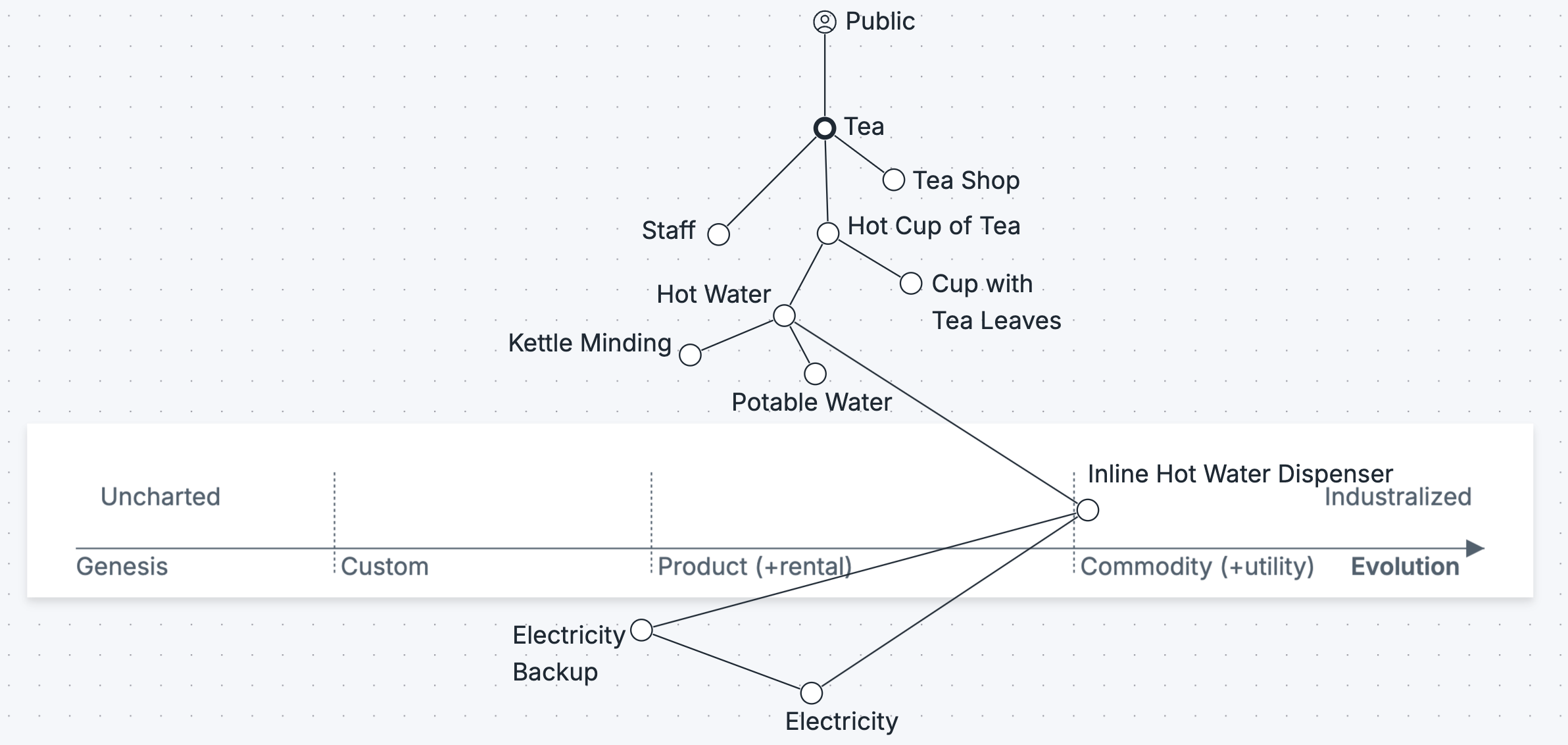
We successfully Elevated the System's Constraint. We can get Hot Water on demand whenever we need, and we no longer need to manage our custom-built Kettle.
Wardley Maps
The technique of introducing an evolution axis to the Value Chain is known as Wardley Mapping, named after its creator Simon Wardley.
So far, you've been introduced to the concept of Evolution as well as the climatic pattern of Everything evolves through supply and demand competition.
Wardley Mapping is a much broader set of practices and principles that consists of Mapping, Doctrine, Climatic Patterns, and Gameplay. As you need more insights and as you place more of your Value Chain on the Evolution axis, an increasing amount of Climatic Patterns and Gameplay options become apparent and applicable to your situation.
Up next
Now that you successfuly Elevated the System's Constraint, you should consider If a Constraint Has Been Broken, Go Back to Step 1.
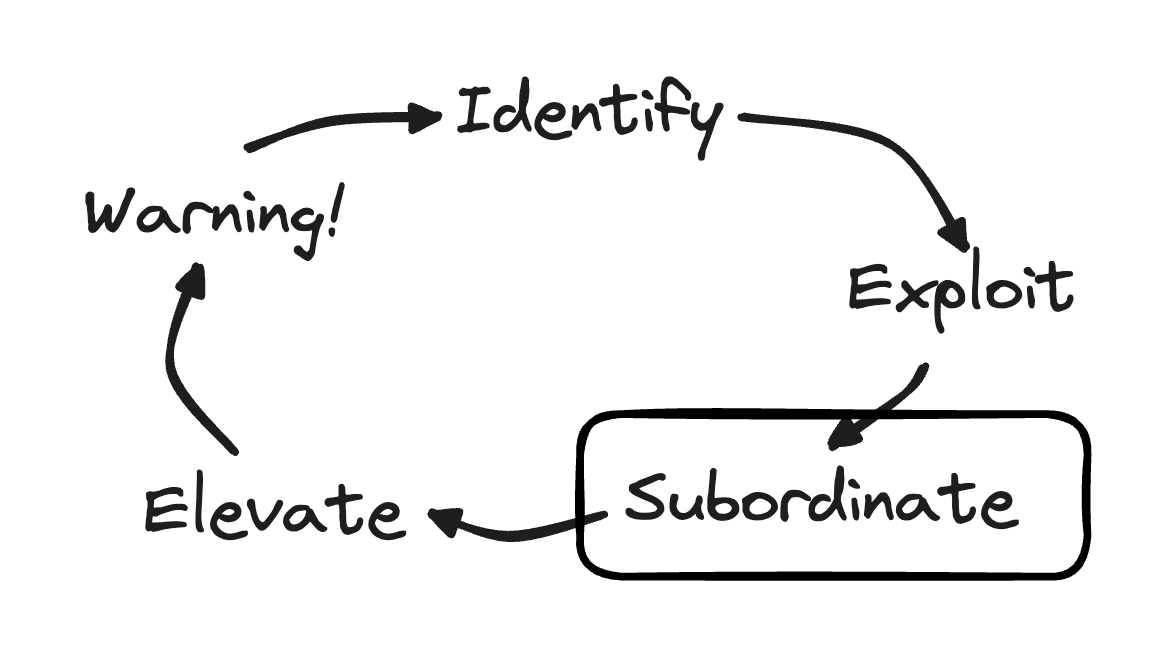
Go back
Subordinate Everything Else to the Above Decision
Learn to subordinate all non-constraints to the primary constraint in your value chain. This guide helps identify relevant non-constraints and ensure efficient flow of value through the system.
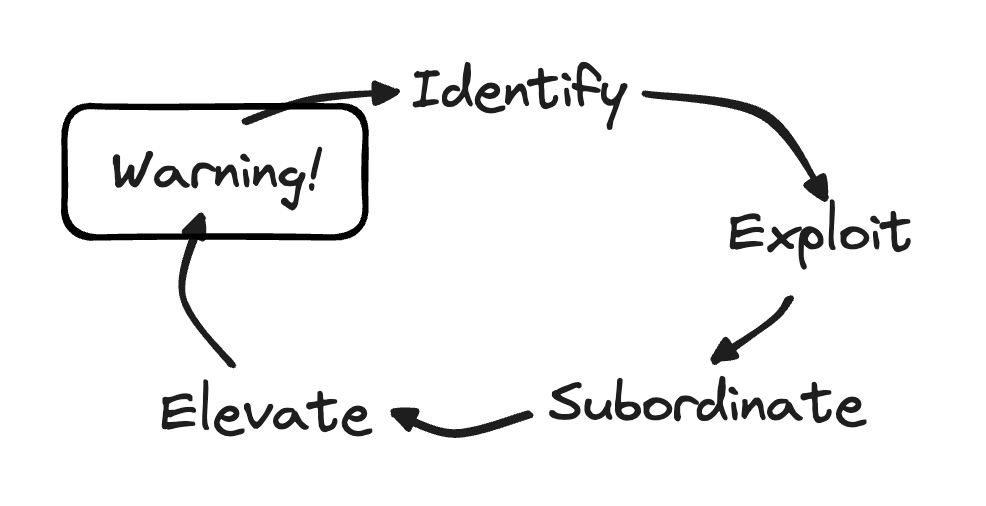
Up next
If a Constraint Has Been Broken, Go Back to Step 1
Explore the critical step of avoiding inertia in the process of managing a system's constraints. Learn the importance of re-evaluating policies and procedures after elevating a constraint to prevent outdated practices from becoming new bottlenecks. Understand the application of Wardley Maps in identifying and addressing obsolete policies to ensure continued system efficiency.
